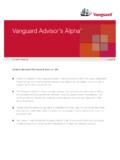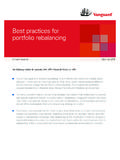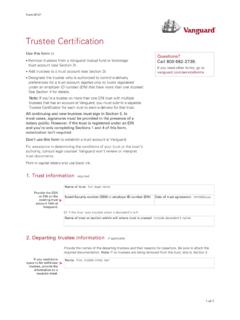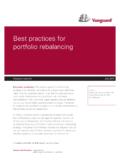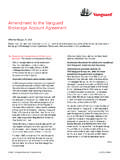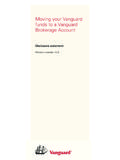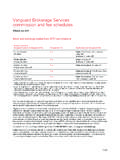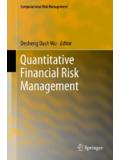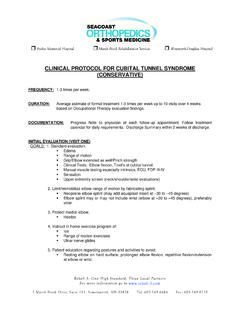Transcription of Vanguard LifeStrategy Funds Prospectus Investor …
1 Investor SharesVanguard LifeStrategy FundsProspectusThe Securities and Exchange Commission (SEC) has not approved or disapproved these securities or passed upon the adequacy of this Prospectus . Any representation to the contrary is a criminal Prospectus contains financial data for the Funds through the fiscal year ended October 31, 22, 2018 Vanguard LifeStrategy Income Fund Investor Shares (VASIX) Vanguard LifeStrategy conservative Growth Fund Investor Shares (VSCGX) Vanguard LifeStrategy Moderate Growth Fund Investor Shares (VSMGX) Vanguard LifeStrategy Growth Fund Investor Shares (VASGX)ContentsVanguard Fund SummariesFinancial Highlights40 LifeStrategy Income Fund1 Investing With Vanguard45 LifeStrategy conservative Growth Fund6 Purchasing Shares45 LifeStrategy Moderate Growth Fund12 Redeeming Shares48 LifeStrategy Growth Fund18 Exchanging Shares52 Investing in Vanguard LifeStrategy Funds24 Frequent-Trading Limitations52 More on the Funds25 Other Rules You Should Know54 The Funds and Vanguard35 Fund and Account Updates58 Investment Advisor36 Employer-Sponsored Plans60 Dividends, Capital Gains.
2 And Taxes37 Contacting Vanguard61 Share Price39 Additional Information62 Glossary of Investment Terms651 Vanguard LifeStrategy Income FundInvestment ObjectiveThe Fund seeks to provide current income and some capital and ExpensesThe following table describes the fees and expenses you may pay if you buy and hold shares of the Fees(Fees paid directly from your investment)Sales Charge (Load) Imposed on PurchasesNonePurchase FeeNoneSales Charge (Load) Imposed on Reinvested DividendsNoneRedemption FeeNoneAccount Service Fee (for certain fund account balances below $10,000)$20/yearAnnual Fund Operating Expenses(Expenses that you pay each year as a percentage of the value of your investment)Management FeesNone12b-1 Distribution FeeNoneOther ExpensesNoneAcquired Fund Fees and Annual Fund Operating following example is intended to help you compare the cost of investing in the Fund (based on the fees and expenses of the acquired Funds ) with the cost of investing in other mutual Funds .
3 It illustrates the hypothetical expenses that you would incur over various periods if you were to invest $10,000 in the Fund s shares. This example assumes that the Fund provides a return of 5% each year and that total annual fund operating expenses of the Fund and its underlying Funds remain as stated in the preceding table. You would incur these hypothetical expenses whether or not you redeem your investment at the end of the given period. Although your actual costs may be higher or lower, based on these assumptions your costs would be:Portfolio TurnoverThe Fund may pay transaction costs, such as purchase fees, when it buys and sells securities (or turns over its portfolio).
4 A higher portfolio turnover rate may indicate higher transaction costs and may result in more taxes when Fund shares are held in a taxable account. These costs, which are not reflected in annual fund operating expenses or in the previous expense example, reduce the Fund s performance. During the most recent fiscal year, the Fund s portfolio turnover rate was 4% of the average value of its Investment StrategiesThe Fund invests in other Vanguard mutual Funds according to a fixed formula that reflects an allocation of approximately 80% of the Fund s assets to bonds and 20% to common stocks. The targeted percentage of the Fund s assets allocated to each of the underlying Funds is: Vanguard Total Bond Market II Index Fund 56% Vanguard Total International Bond Index Fund24% Vanguard Total Stock Market Index Fund 12% Vanguard Total International Stock Index Fund8%The Fund s indirect bond holdings are a diversified mix of short-, intermediate-, and long-term government, agency, and investment-grade corporate bonds; mortgage-backed and asset-backed securities; and government, agency, corporate, and securitized investment-grade foreign bonds issued in currencies other than the dollar (but hedged by Vanguard to minimize foreign currency exposure).
5 The 1 Year3 Years5 Years10 Years$11$35$62$1413 Fund s indirect stock holdings are a diversified mix of and foreign large-, mid-, and small-capitalization RisksThe Fund is subject to the risks associated with the stock and bond markets, any of which could cause an Investor to lose money. However, because fixed income securities such as bonds usually are less volatile than stocks and because the Fund invests most of its assets in fixed income securities, the Fund s overall level of risk should be relatively low. With a target allocation of approximately 80% of its assets in bonds, the Fund is proportionately subject to bond risks, including the following: interest rate risk, which is the chance that bond prices will decline because of rising interest rates; credit risk, which is the chance that the issuer of a security will fail to pay interest or principal in a timely manner or that negative perceptions of the issuer s ability to make such payments will cause the price of that security to decline, thus reducing the underlying fund s return; and income risk, which is the chance that an underlying fund s income will decline because of falling interest rates.
6 If an underlying fund holds securities that are callable, the underlying fund s income may decline because of call risk, which is the chance that during periods of falling interest rates, issuers of callable bonds may call (redeem) securities with higher coupon rates or interest rates before their maturity dates. An underlying fund would then lose any price appreciation above the bond s call price and would be forced to reinvest the unanticipated proceeds at lower interest rates, resulting in a decline in the underlying fund s income. The Fund is also subject to the following risks associated with investments in currency-hedged foreign bonds: country/regional risk, which is the chance that world events such as political upheaval, financial troubles, or natural disasters will adversely affect the value and/or liquidity of securities issued by foreign governments, government agencies, or companies; and currency hedging risk, which is the chance that the currency hedging transactions entered into by the underlying international bond fund may not perfectly offset the fund s foreign currency exposure.
7 With a target allocation of approximately 20% of its assets in stocks, the Fund is proportionately subject to stock market risk, which is the chance that stock prices overall will decline. Stock markets tend to move in cycles, with periods of rising prices and periods of falling prices. The Fund is also subject to asset allocation risk, which is the chance that the selection of underlying Funds , and the allocation of assets to them, will cause the Fund to underperform other Funds with a similar investment investment in the Fund is not a deposit of a bank and is not insured or guaranteed by the Federal Deposit Insurance Corporation or any other government Total ReturnsThe following bar chart and table are intended to help you understand the risks of investing in the Fund.
8 The bar chart shows how the performance of the Fund has varied from one calendar year to another over the periods shown. The table shows how the average annual total returns of the Fund compare with those of relevant market indexes and a composite bond/stock index, which have investment characteristics similar to those of the Fund. Keep in mind that the Fund s past performance (before and after taxes) does not indicate how the Fund will perform in the future. Updated performance information is available on our website at or by calling Vanguard toll-free at the periods shown in the bar chart, the highest return for a calendar quarter was (quarter ended September 30, 2009), and the lowest return for a quarter was (quarter ended December 31, 2008).
9 Annual Total Returns Vanguard LifeStrategy Income Fund Investor SharesAverage Annual Total Returns for Periods Ended December 31, 20171 Year5 Years10 YearsVanguard LifeStrategy Income Fund Investor SharesReturn Before After Taxes on After Taxes on Distributions and Sale of Fund Indexes(reflect no deduction for fees, expenses, or taxes)Bloomberg Barclays Aggregate Bond Barclays Aggregate Float Adjusted Income Composite after-tax returns depend on your tax situation and may differ from those shown in the preceding table. When after-tax returns are calculated, it is assumed that the shareholder was in the highest individual federal marginal income tax bracket at the time of each distribution of income or capital gains or upon redemption.
10 State and local income taxes are not reflected in the calculations. Please note that after-tax returns are not relevant for a shareholder who holds fund shares in a tax-deferred account, such as an individual retirement account or a 401(k) plan. Also, figures captioned Return After Taxes on Distributions and Sale of Fund Shares may be higher than other figures for the same period if a capital loss occurs upon redemption and results in an assumed tax deduction for the AdvisorThe Fund does not employ an investment advisor but benefits from the investment advisory services provided to the underlying Funds in which it invests. The investment advisor to the underlying Funds is The Vanguard Group, Inc.
